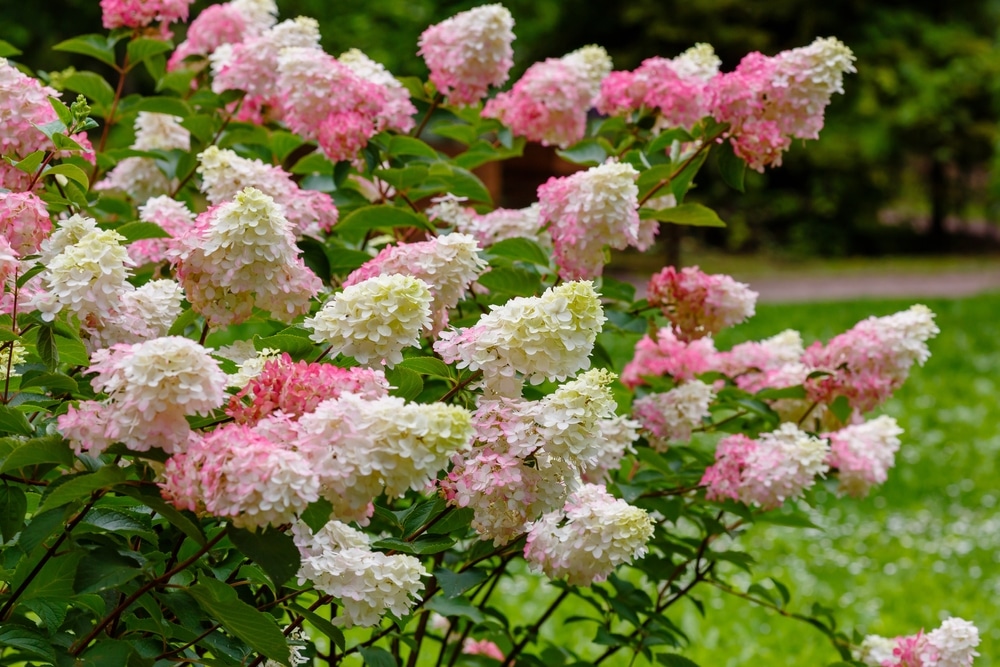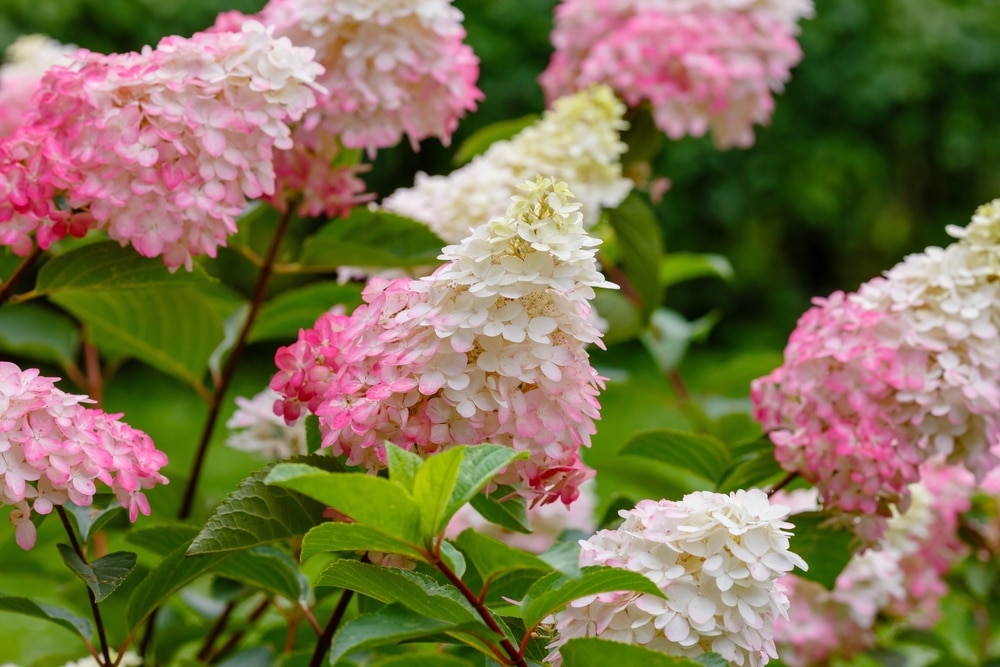The fairytale bride hydrangea is a gorgeous plant that has taken yards and gardens by storm. If you’re interested in including this foliage in your garden, there are a few things you will need to know about how to care for it and its preferred environment.
Below you can find everything you need to know about these plants.

| Botanical Name | Hydrangea paniculata |
| Common Name | Fairytale Bride Hydrangea |
| Plant Type | Perennial |
| Flower Color | White |
| Size When Mature | 48 inches |
| Bloom Time | Spring and Summer |
| Sun Requirements | Full Sun/Partial Shade |
| USDA Hardiness Zones | 7-9 |
| Soil PH Range | 5.5-7.5 |
| Soil Type | Example: Acidic, well-draining |
| Water Needs | Medium |
| Native Area | Hybrid |
What You Need To Know About Fairytale Bride Hydrangea
This beautiful plant boasts elegant white flowers amidst rich green foliage. The blossoms grow in clusters and cascade down and away from the plant. You can enjoy these blooms from spring through the summer months.
They are perfect for decorating porches and incredibly easy to care for. Beginner gardeners will be grateful for how simple it is to keep this plant happy.
How To Care for Fairytale Bride Hydrangea
Caring for this plant is exceptionally easy. Once it has reached maturity and is well-established, you won’t have to do much in order to keep this plant thriving. Here’s everything you need to know to care for it.
Light Requirements
This plant prefers plenty of sunshine with at least five hours of direct light. Partial shade is acceptable for this plant, particularly during the hottest hours.
It’s important that this plant does not compete with others for sunlight. Try to avoid placing it beneath other foliage or on dark porches. Without sufficient light, there will be fewer flowers, if it survives at all.
Water and Soil Requirements
Like all plants, the fairy tale bride hydrangea has specific water and soil requirements. Fortunately, it isn’t difficult to meet the needs of this plant.
Generally, you can expect it to prefer moderately watered soil. You’ll want to give it a good soak whenever you notice the soil becoming dry, especially when it’s young. It won’t tolerate long periods of drought or soil that is left soggy. Invest in high-quality, well-drained soil. Loam, sand, and clay are all acceptable.
Regarding pH balance, you should do your best to plant these flowers in acidic to slightly alkaline soil. Typically, this will look like 5.5 to 7.5 on the pH scale.
Temperature Requirements
This hydrangea does prefer a specific climate but is hardy in several different zones. For the most vibrant appearance, zones 7 through 9 are preferable, although some gardeners have managed to grow hydrangeas in zone 10. Otherwise, they can survive both warmer and cooler climates with proper care.
Fertilizer
Fertilizing plants is an essential part of keeping them healthy and beautiful. Unfortunately, not all fertilizers are created equal, and not all of them will be suitable for your plant. The good news is you won’t have trouble finding one for these flowers.
The fairytale hydrangea isn’t picky when it comes to fertilizer. In fact, you shouldn’t need to add much fertilizer at all if your soil is of good quality. An all-purpose fertilizer should do the trick in these cases. If you are interested in adding a natural fertilizer, try something like coffee grounds a few times a year.
Pests
These plants are created to be resistant to most pests. They are well known for attracting beneficial visitors to your gardens, such as hummingbirds and butterflies. While it is important to remain vigilant about your plants, these hydrangeas are great at repelling unwanted attention.
These plants can get fungal infections, however. They can also suffer from sun-scorch.
Propagation
If you have fallen in love with this plant, you might consider propagating it to add a few more to your yard or garden.
Propagating from cuttings is fairly easy; fortunately, you can do this through late summer. It’s important to get it done before the fall season, however. Unless you live somewhere particularly warm, you could run out of time to let the roots grow before it gets too cold.
It’s also wise to cut in the morning when your plants are less stressed.
Below is a guide on how to propagate plants from cuttings:
- Select a sturdy, young portion of leaves
- Using a clean pair of cutters, remove the leaves at the leaf node
- Remove excess leaves
- Put the cuttings in some water
- Transfer the cutting to a tray with soil or compost
- Place the leaves in bright, indirect sunlight
- Keep them moist and wait for roots to grow

